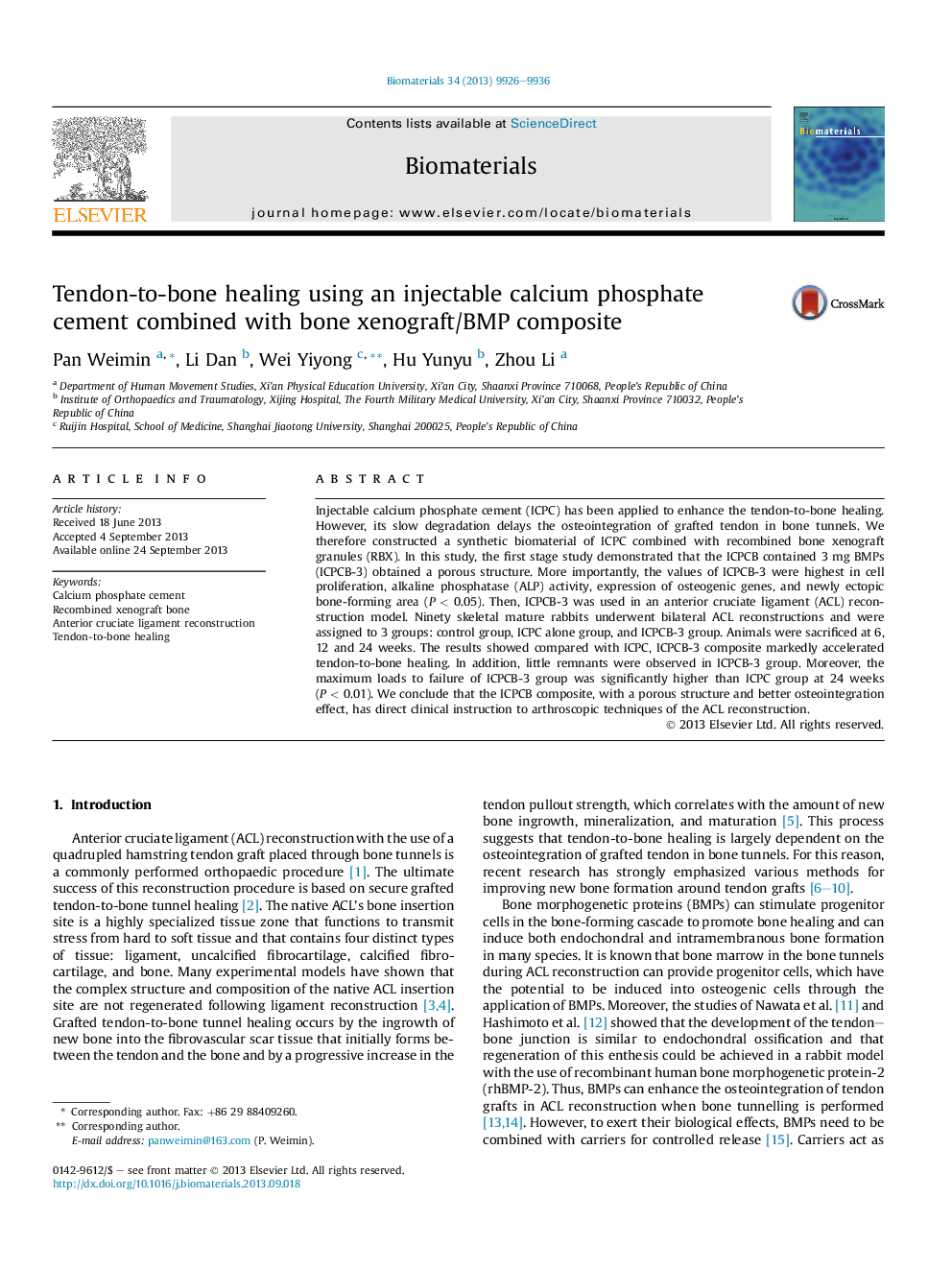| Article ID | Journal | Published Year | Pages | File Type |
|---|---|---|---|---|
| 10228114 | Biomaterials | 2013 | 11 Pages |
Abstract
Injectable calcium phosphate cement (ICPC) has been applied to enhance the tendon-to-bone healing. However, its slow degradation delays the osteointegration of grafted tendon in bone tunnels. We therefore constructed a synthetic biomaterial of ICPC combined with recombined bone xenograft granules (RBX). In this study, the first stage study demonstrated that the ICPCB contained 3Â mg BMPs (ICPCB-3) obtained a porous structure. More importantly, the values of ICPCB-3 were highest in cell proliferation, alkaline phosphatase (ALP) activity, expression of osteogenic genes, and newly ectopic bone-forming area (PÂ <Â 0.05). Then, ICPCB-3 was used in an anterior cruciate ligament (ACL) reconstruction model. Ninety skeletal mature rabbits underwent bilateral ACL reconstructions and were assigned to 3 groups: control group, ICPC alone group, and ICPCB-3 group. Animals were sacrificed at 6, 12 and 24 weeks. The results showed compared with ICPC, ICPCB-3 composite markedly accelerated tendon-to-bone healing. In addition, little remnants were observed in ICPCB-3 group. Moreover, the maximum loads to failure of ICPCB-3 group was significantly higher than ICPC group at 24 weeks (PÂ <Â 0.01). We conclude that the ICPCB composite, with a porous structure and better osteointegration effect, has direct clinical instruction to arthroscopic techniques of the ACL reconstruction.
Related Topics
Physical Sciences and Engineering
Chemical Engineering
Bioengineering
Authors
Pan Weimin, Li Dan, Wei Yiyong, Hu Yunyu, Zhou Li,
